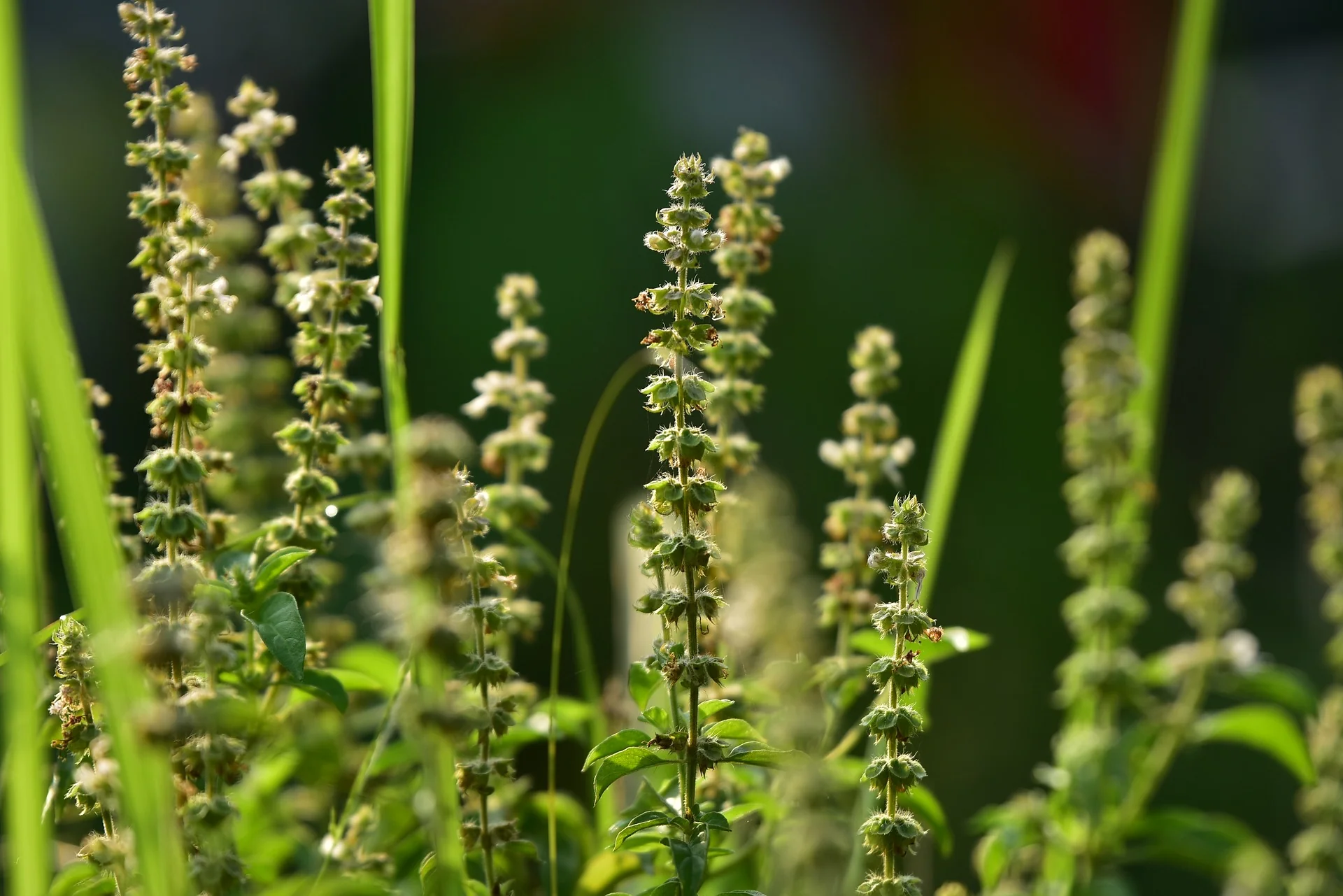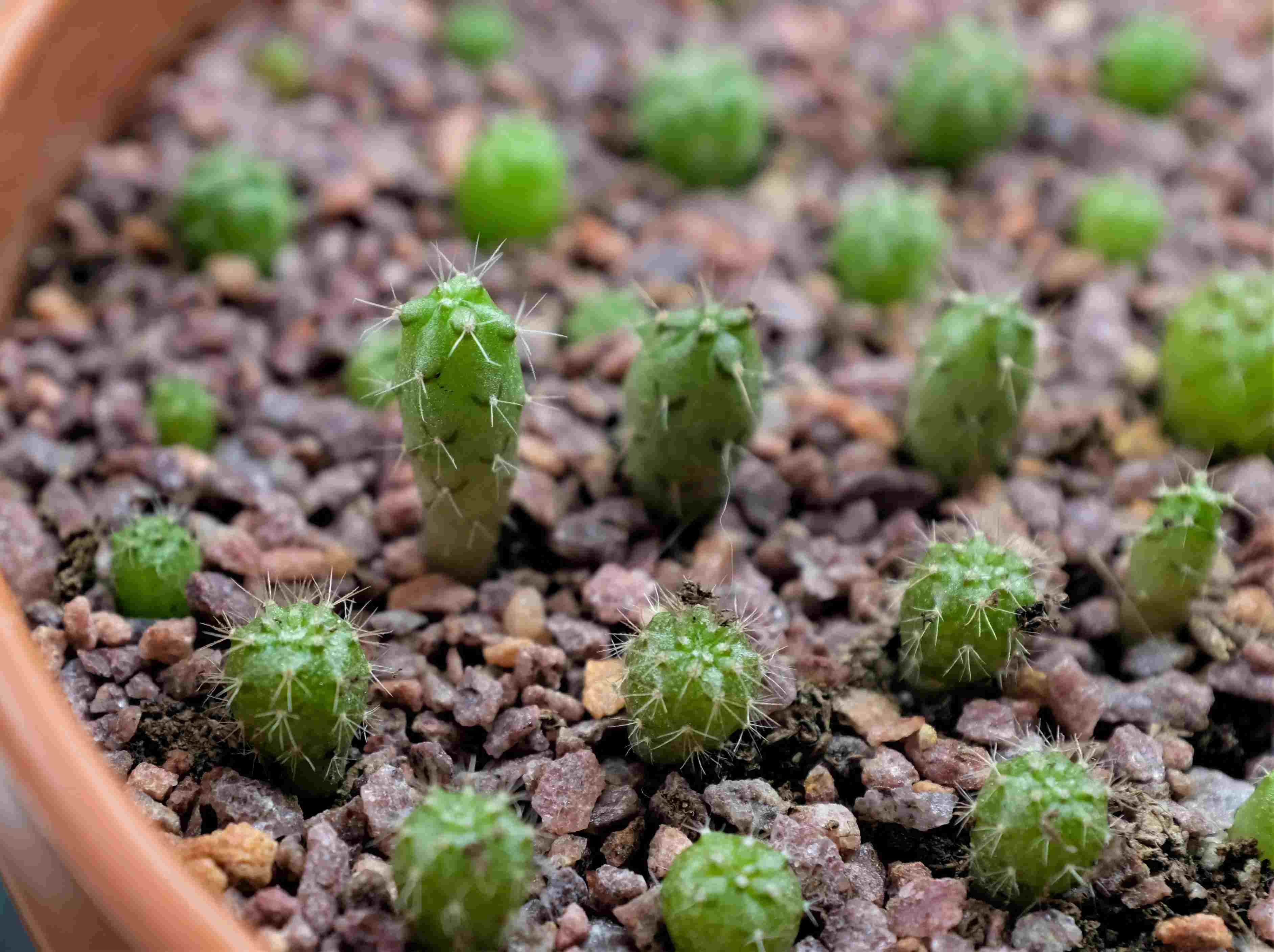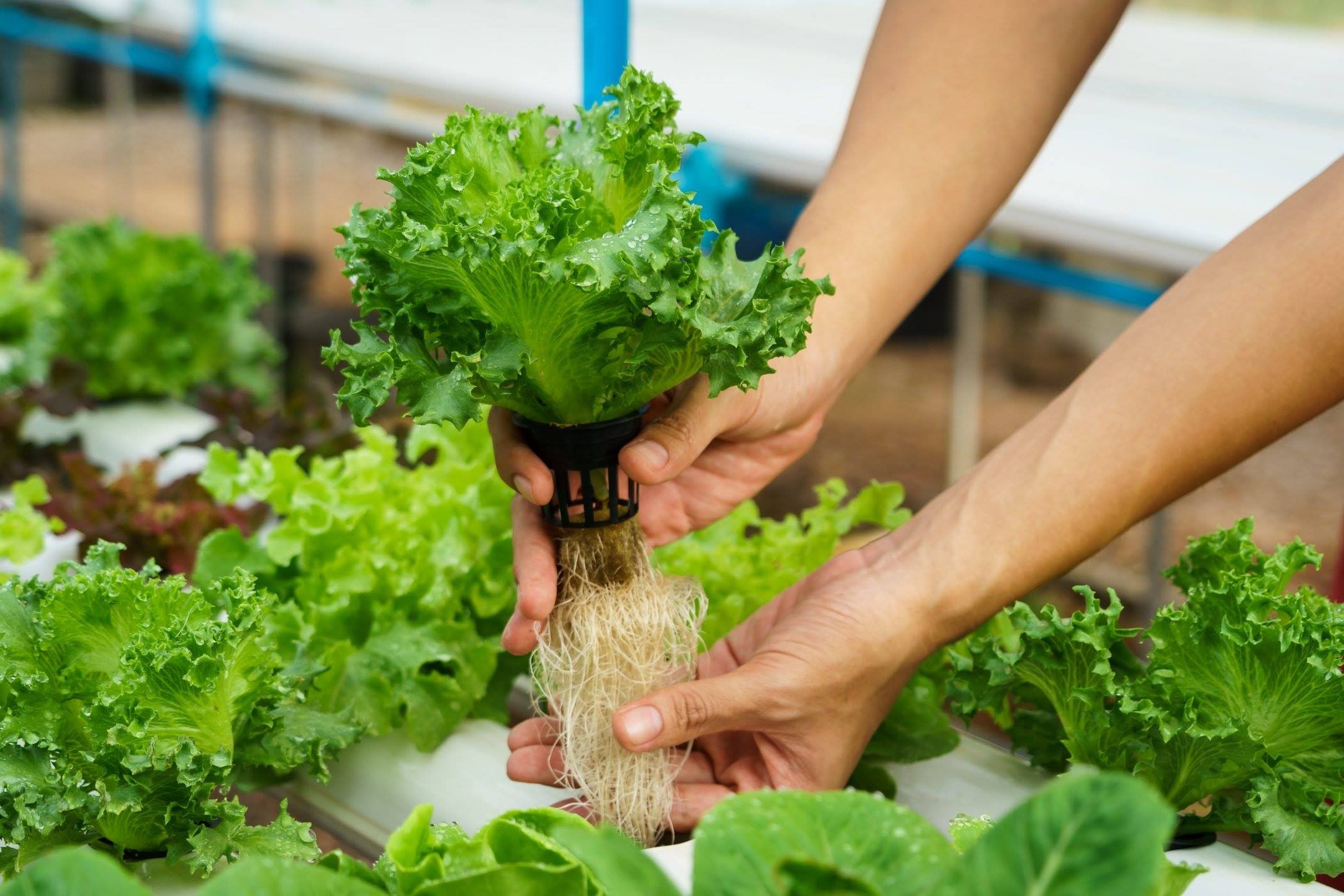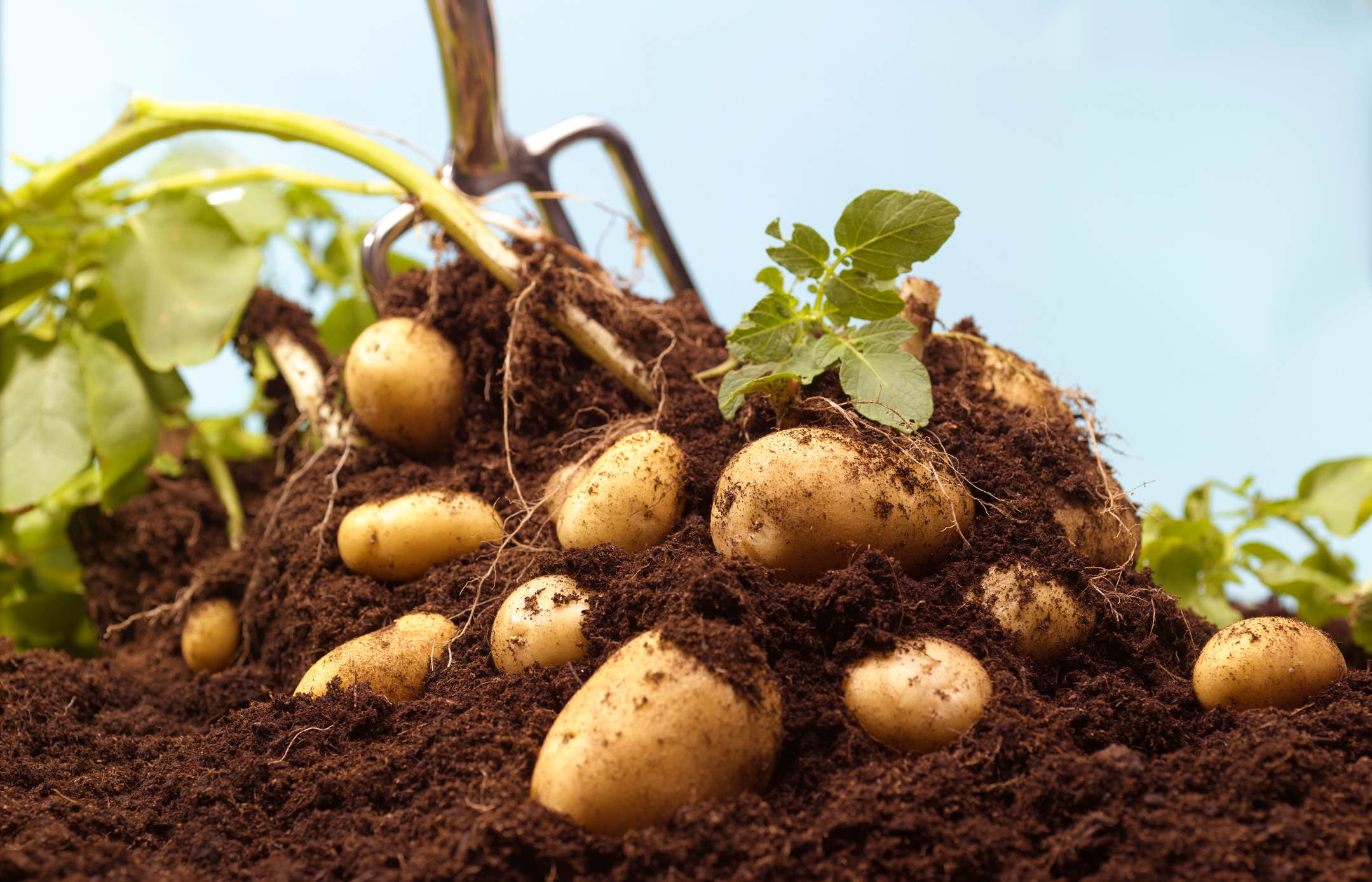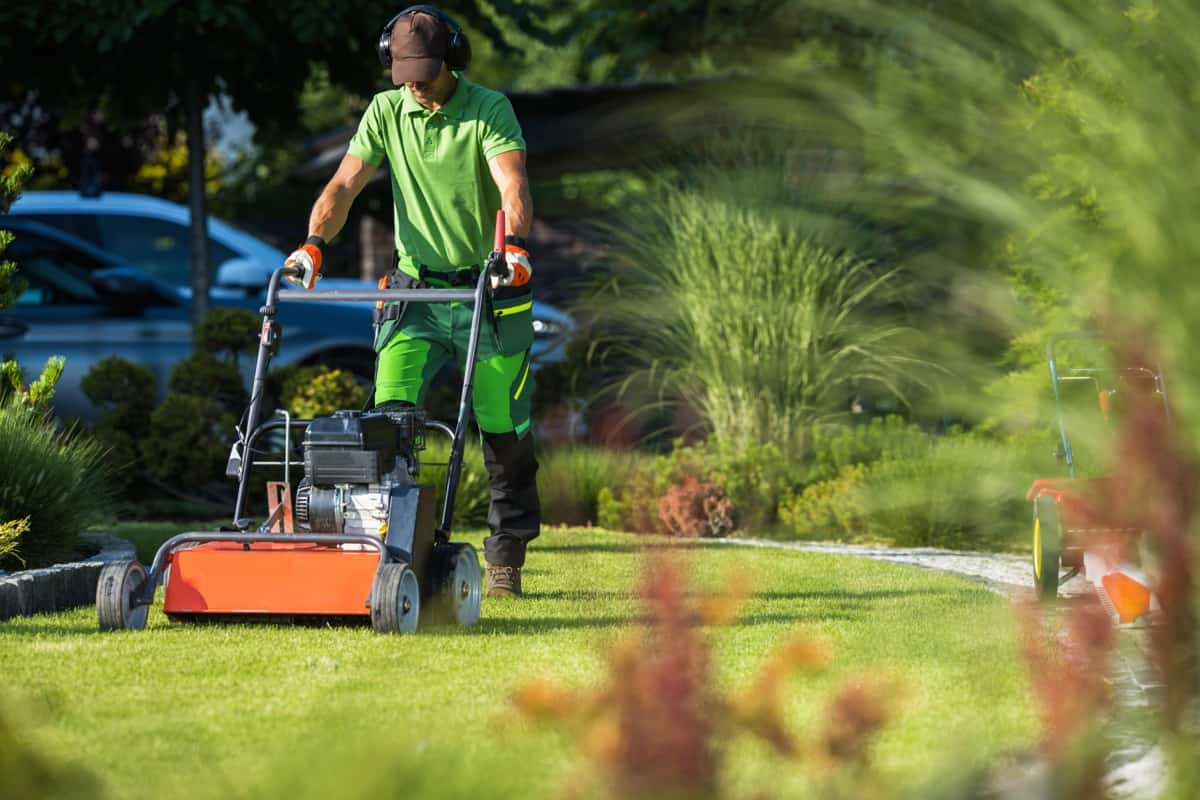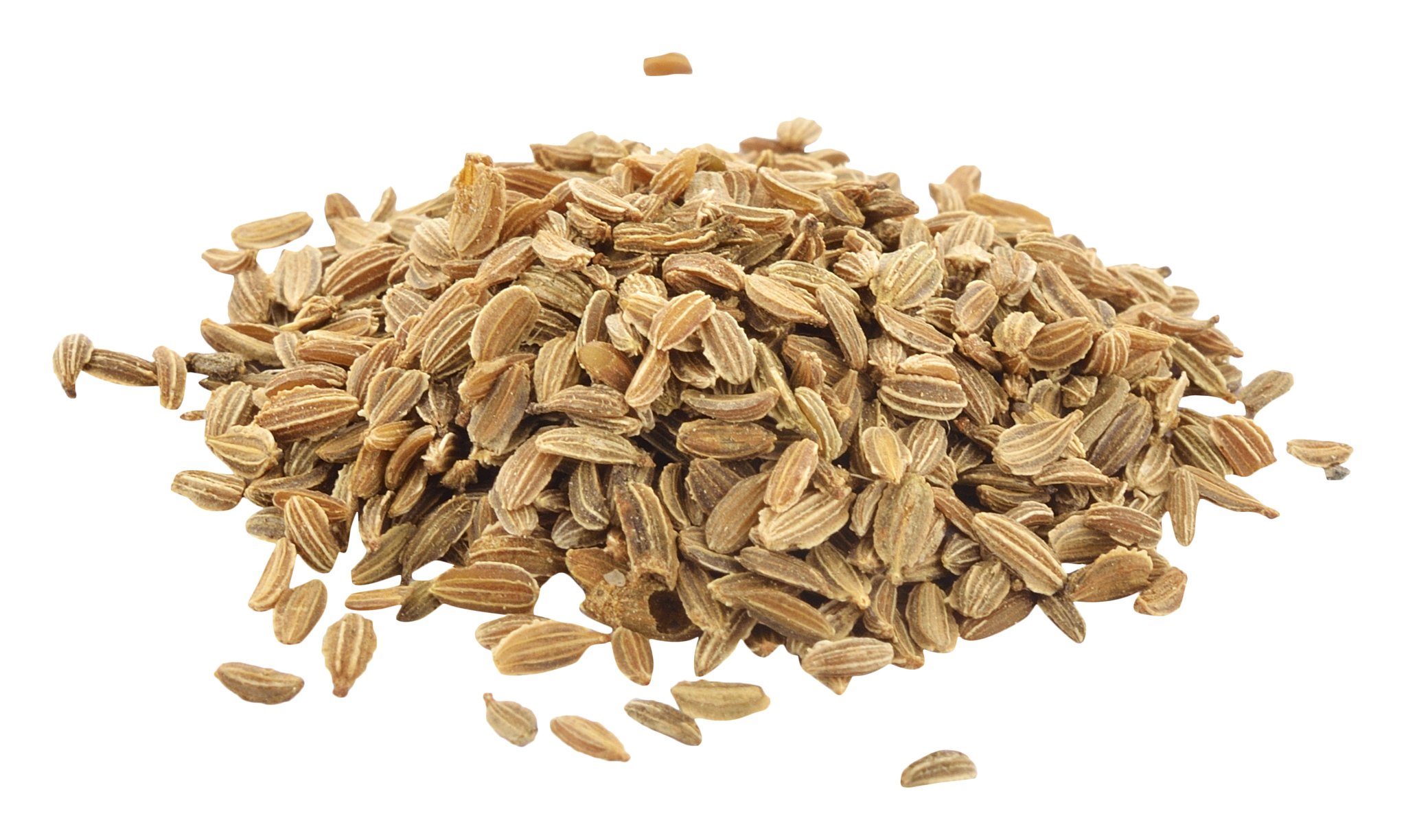Home>Gardening Techniques>DIY Projects>How To Start A Backyard Nursery
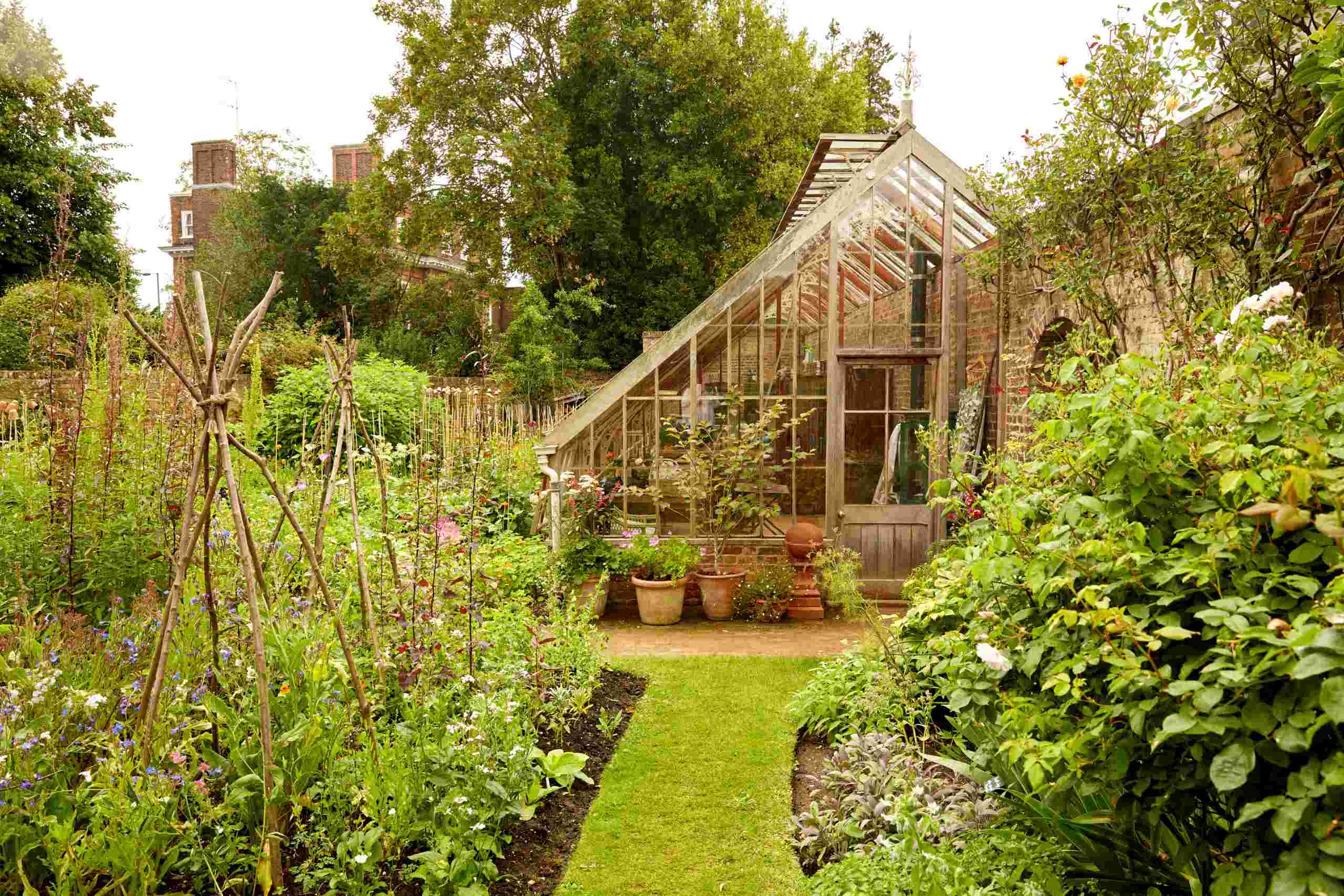

DIY Projects
How To Start A Backyard Nursery
Published: August 5, 2023
Learn how to start your own backyard nursery with these helpful DIY projects and tips. Transform your backyard into a beautiful garden oasis.
(Many of the links in this article redirect to a specific reviewed product. Your purchase of these products through affiliate links helps to generate commission for Chicagolandgardening.com, at no extra cost. Learn more)
Table of Contents
- Introduction
- Step 1: Choosing the Right Location for Your Backyard Nursery
- Step 2: Selecting the Plants for Your Backyard Nursery
- Step 3: Preparing the Soil and Creating Suitable Growing Conditions
- Step 4: Propagation Techniques for Starting Plants
- Step 5: Setting up the Infrastructure for Your Backyard Nursery
- Step 6: Caring for and Maintaining Your Plants
- Step 7: Marketing and Selling Your Nursery Plants
- Step 8: Expanding and Scaling Your Backyard Nursery
- Conclusion
Introduction
Welcome to the exciting world of backyard nurseries! If you have a green thumb and love working with plants, starting a backyard nursery can be a fulfilling and profitable venture. Whether you’re looking to turn your hobby into a business or simply want to grow a variety of plants for personal use, this comprehensive guide will walk you through the steps to get started.
Running a backyard nursery offers numerous advantages. Not only does it allow you to pursue your passion for gardening, but it also provides an opportunity to connect with nature and contribute to a sustainable environment. Additionally, you can save money by growing your own plants rather than purchasing them from a commercial nursery.
But where do you begin? This guide will take you through the fundamental steps to establish and successfully manage your backyard nursery. From choosing the right location to marketing and selling your plants, we’ve got you covered.
No matter the size of your backyard, you can create a thriving nursery. Whether you have a sprawling yard or a compact space, with proper planning and organization, your backyard nursery can be a flourishing haven for plants.
In the following sections, we’ll explore each step in detail, providing you with all the necessary knowledge and guidance to make your backyard nursery dream a reality. Let’s dig in!
Step 1: Choosing the Right Location for Your Backyard Nursery
The success of your backyard nursery largely depends on selecting the optimal location. When choosing a spot for your nursery, consider factors such as sunlight, accessibility, and proximity to water sources. Here are a few key points to keep in mind:
- Sunlight: Most plants thrive in full sun, so it’s crucial to choose a location that receives at least 6-8 hours of direct sunlight each day. Observe your yard throughout the day to identify areas with the most sunlight.
- Accessibility: Ensure that your nursery is easily accessible for maintenance and day-to-day operations. Consider the proximity to your house, as well as factors like pathways, parking, and space for equipment.
- Water Source: Having a convenient water source nearby is essential for easy watering of your plants. Consider installing a hose or irrigation system for efficient irrigation and minimize the time and effort spent on watering.
- Drainage: Good drainage is crucial to prevent waterlogging, which can be detrimental to plant health. Avoid areas prone to standing water, and if necessary, consider installing a drainage system or raised beds.
- Space: Assess the available space in your backyard and plan accordingly. Consider the number and size of plants you intend to grow and ensure there is enough space for each plant to grow and thrive.
- Neighborhood Regulations: Check local regulations or neighborhood association rules to ensure compliance with any restrictions or permits required for running a backyard nursery.
Once you have considered these factors, take a walk around your yard and visualize where the nursery will be placed. Keep in mind that you can always start small and expand as your nursery grows.
Remember, the location you choose now will have a direct impact on the health and growth of your plants. Take your time to evaluate different options and select a spot that provides optimal growing conditions for your backyard nursery.
Step 2: Selecting the Plants for Your Backyard Nursery
Choosing the right plants for your backyard nursery is crucial for its success. Consider your target audience, climate, and market demand when deciding which plants to grow. Here are a few key points to help you in the selection process:
- Research Market Demand: Conduct market research to identify the most popular and in-demand plants in your area. This will help ensure that you grow plants that people are eager to buy.
- Consider Your Climate: Take into account the specific climatic conditions of your region. Consider whether your chosen plants are suitable for the local climate, including temperature ranges, frost dates, and rainfall patterns.
- Know Your Target Audience: Understand your target audience and their preferences. Are they more inclined towards edible plants, ornamental flowers, or native species? Tailor your plant selection to cater to their needs and interests.
- Diversify Your Offerings: Offer a variety of plants to appeal to a wide range of customers. Include a mix of annuals, perennials, shrubs, and trees to provide options for different gardening preferences and purposes.
- Consider Specialty Plants: Research specialty or niche plants that have higher demand and can potentially fetch higher prices. These could include rare or exotic plants, heirloom varieties, or plants with specific medicinal or culinary uses.
- Assess Growing Requirements: Evaluate the growing requirements of the plants you choose, including soil type, sunlight, water needs, and maintenance. Make sure you can provide the necessary conditions for optimal plant growth.
- Start with Easy-to-Grow Plants: If you’re new to gardening or running a nursery, start with plants that are relatively easy to grow and maintain. This will build your confidence and experience before diversifying into more challenging species.
By carefully selecting plants for your backyard nursery based on market demand, climate suitability, and customer preferences, you increase your chances of success. Regularly assess and adjust your plant selection to stay current with trends and market demands.
Remember, the plants you choose will be the heart and soul of your backyard nursery. Take the time to research and select plants that will thrive in your area and resonate with your target audience.
Step 3: Preparing the Soil and Creating Suitable Growing Conditions
A crucial aspect of running a successful backyard nursery is preparing the soil and creating the ideal growing conditions for your plants. Proper soil preparation and maintenance are essential for healthy plant growth and productivity. Here are some key steps to consider:
- Soil Testing: Start by conducting a soil test to determine its composition and nutrient levels. This will help you understand if any amendments are needed to optimize soil fertility. Contact your local agricultural extension office for information on soil testing services.
- Amending the Soil: Based on the soil test results, add organic matter, such as compost or well-rotted manure, to improve soil structure, fertility, and drainage. Adjust the pH level, if necessary, to ensure it falls within the optimal range for the plants you’re growing.
- Weed Control: Clear the area of weeds before planting. Weeds compete with your plants for nutrients, water, and sunlight, so it’s crucial to establish weed control measures, such as mulching or regular manual removal.
- Proper Drainage: Ensuring adequate drainage is vital to prevent waterlogged soil, which can lead to root rot and other plant diseases. If your soil has poor drainage, consider incorporating organic matter or creating raised beds to improve drainage.
- Irrigation System: Install an efficient irrigation system to ensure your plants receive adequate water. Consider drip irrigation, which delivers water directly to the plant’s root zone and minimizes water wastage through evaporation.
- Implement Pest Control Measures: Take preventive measures to protect your plants from pests and diseases. Use organic pest control methods whenever possible to minimize the use of harmful chemicals and ensure the health of your plants and the environment.
- Maintain Proper Mulching: Apply a layer of organic mulch around your plants to conserve soil moisture, suppress weed growth, and regulate soil temperature. Keep the mulch layer 2-3 inches thick and avoid piling it against the plant stem to prevent rotting.
Creating suitable growing conditions for your plants will help them thrive and minimize the risk of plant stress, diseases, and pests. Regularly observe your plants and make any necessary adjustments to maintain optimal growing conditions.
Remember, healthy plants start with healthy soil. Take the time to prepare and maintain your soil to provide the best possible growing environment for your backyard nursery.
Step 4: Propagation Techniques for Starting Plants
Propagation is an essential skill for any backyard nursery owner. By mastering different propagation techniques, you can multiply your plant stock and have a consistent supply of healthy plants. Here are some common propagation methods to get you started:
- Seeds: Growing plants from seeds is an economical and versatile method. Learn about seed starting techniques, including seed selection, germination requirements, and proper sowing and transplanting practices.
- Cuttings: Many plants can be easily propagated from stem, root, or leaf cuttings. Research which plants in your backyard nursery can be successfully propagated through this method and learn the specific techniques for each plant variety.
- Division: Perennial plants that form clumps, like ornamental grasses and certain flowering perennials, can be divided into smaller sections to create new individual plants. Carefully separate the clumps, ensuring each division has sufficient roots and foliage.
- Grafting: Grafting is an advanced technique that involves combining two different plant parts to create a new plant with desirable qualities. This method is commonly used for fruit trees and roses, but it requires knowledge and practice to master.
- Air Layering: Air layering is a technique used for plants with long, flexible branches. By creating a wound on the stem and stimulating root growth, you can produce a new plant that is genetically identical to the parent plant.
- Tissue Culture: Tissue culture involves growing plants in a laboratory setting using small plant tissue samples. This method allows for the production of a large number of genetically identical plants within a short period, but it requires specialized equipment and expertise.
Each propagation method has its own advantages and challenges, so it’s important to research and practice the techniques that are suitable for the plants you’re growing. Experiment with different methods to find the ones that work best for you and your backyard nursery.
Remember, propagation is a valuable skill that allows you to expand and diversify your plant inventory. With practice and patience, you’ll develop the expertise to propagate a wide variety of plants and ensure a steady supply of healthy and beautiful specimens in your backyard nursery.
Step 5: Setting up the Infrastructure for Your Backyard Nursery
Setting up the infrastructure for your backyard nursery is essential for smooth operations and efficient plant management. Creating a functional and organized space will help you maximize productivity and ensure the well-being of your plants. Here are some key considerations when setting up your nursery:
- Greenhouse or Cold Frame: Consider installing a greenhouse or cold frame to provide controlled environments for starting seeds, nurturing young plants, and protecting tender plants from extreme weather conditions.
- Shade Structures: Some plants require shade or filtered sunlight. Install shade structures, like shade cloth or hoop houses, to regulate light intensity and protect sensitive plants from excessive sun exposure.
- Planting Beds and Containers: Determine the best planting method for your plants. Use raised beds, traditional in-ground beds, or containers based on the specific needs of the plants you’re growing. Ensure adequate spacing between plants to allow for healthy growth.
- Nursery Benches or Tables: Utilize sturdy nursery benches or tables to provide a convenient workspace for potting plants, organizing tools and supplies, and displaying potted plants for sale.
- Storage and Organization: Set up storage areas for tools, pots, fertilizers, and other nursery supplies. Keep everything neatly organized and easily accessible to facilitate efficient workflow.
- Irrigation System: Install a reliable irrigation system to ensure consistent and efficient watering of your plants. Consider using drip irrigation or sprinklers to deliver water directly to the root zone.
- Pathways and Access: Create clear pathways and access points within your nursery to allow for easy movement and maintenance tasks. This will enhance safety and efficiency during daily operations.
- Signage and Labeling: Use signs and labels to provide essential information about the plants you have available for sale. Clearly display plant names, care instructions, and prices to assist customers in making informed purchasing decisions.
By setting up the infrastructure for your backyard nursery, you create a functional and organized space that supports healthy plant growth and efficient operations. Take the time to plan and design your nursery layout and invest in the necessary structures and tools for a successful venture.
Remember, a well-designed nursery infrastructure will not only benefit your plants but also enhance your overall gardening experience and the satisfaction of running a backyard nursery.
Step 6: Caring for and Maintaining Your Plants
Caring for and maintaining your plants is crucial to their health and overall success in your backyard nursery. Proper plant care involves regular monitoring, timely watering, pruning, fertilizing, and disease prevention. Here are some key steps to ensure the well-being of your plants:
- Regular Monitoring: Stay vigilant and regularly inspect your plants for signs of pests, diseases, nutrient deficiencies, or other issues. Early detection allows for timely intervention and prevents the spread of problems.
- Watering: Provide adequate water to your plants based on their specific needs. Ensure consistent moisture levels in the soil, avoiding both under-watering and over-watering. Adjust watering frequency and intensity according to the weather conditions.
- Pruning and Trimming: Prune your plants to promote healthy growth, improve airflow, and maintain desired shapes. Remove dead or diseased branches, and trim back overgrown foliage to encourage compact growth.
- Fertilizing: Feed your plants with appropriate fertilizers to replenish essential nutrients and promote vigorous growth. Use organic or slow-release fertilizers for sustained nutrition, and follow the recommended application rates for each plant type.
- Weed Control: Regularly remove weeds from your nursery beds to minimize competition for resources and prevent the spread of weeds. Organic mulch can help suppress weed growth and conserve soil moisture.
- Pest and Disease Management: Implement an integrated pest management (IPM) approach to control pests and diseases in your backyard nursery. Monitor for pests, use organic pest control methods whenever possible, and promptly address any signs of plant diseases.
- Seasonal Care: Adapt your plant care practices to the changing seasons. Be mindful of frost, extreme heat, or heavy rainfall events and take appropriate measures to protect your plants.
- Plant Maintenance Records: Keep records of your plant care activities, including watering schedules, fertilization dates, pruning, and pest control measures. This helps you track the progress of your plants and identify any patterns or issues that may arise.
Consistent care and maintenance are key to ensuring healthy and thriving plants in your backyard nursery. By providing the right care and being attentive to the needs of each plant, you create an environment where your plants can flourish and reach their full potential.
Remember, the well-being of your plants is in your hands. Dedicate time and effort to care for and maintain them, and you’ll reap the rewards of a beautiful and successful backyard nursery.
Step 7: Marketing and Selling Your Nursery Plants
Marketing and selling your nursery plants is a crucial aspect of running a successful backyard nursery. Effective marketing strategies will help you attract customers and generate sales. Here are some key steps to market and sell your nursery plants:
- Create a Brand Identity: Develop a unique brand identity for your backyard nursery that reflects your values and offerings. Create a compelling logo, design attractive signage, and establish a consistent visual style.
- Build an Online Presence: Set up a website or social media platforms to showcase your plants, share gardening tips, and connect with potential customers. Use high-quality photos, detailed plant descriptions, and engaging content to captivate visitors.
- Utilize Local Directories: List your backyard nursery in local directories, gardening magazines, or community boards to increase visibility within your target market. Attend local gardening events or markets to promote your business.
- Offer a Variety of Plants: Provide a diverse range of plants to attract a broader customer base. Consider offering unique or hard-to-find plants to differentiate yourself from competitors.
- Provide Plant Care Resources: Educate your customers on proper plant care by offering plant care guides, blog articles, or workshops. This will build trust and establish you as an expert in the field.
- Offer Exceptional Customer Service: Provide personalized customer service, including knowledgeable advice, prompt responses to inquiries, and assistance with plant selection. Happy customers are more likely to become repeat buyers and recommend your nursery to others.
- Implement Effective Pricing Strategies: Determine competitive and profitable prices for your plants. Consider factors such as production costs, market demand, and the uniqueness of your offerings. Offer package deals or loyalty programs to incentivize customer purchases.
- Provide Convenient Sales Channels: Make it convenient for customers to purchase your plants by offering various sales channels. This can include on-site sales, online ordering with local delivery, or participating in farmers’ markets or plant fairs.
Effective marketing and sales strategies are essential to attract customers and establish a loyal customer base for your backyard nursery. By communicating the unique value of your plants and providing excellent customer service, you can differentiate yourself from competitors and build a successful business.
Remember, marketing and selling your nursery plants is an ongoing process. Continuously evaluate and refine your strategies to stay relevant, adapt to changing trends, and meet the evolving needs of your customers.
Step 8: Expanding and Scaling Your Backyard Nursery
As your backyard nursery grows and becomes successful, you may consider expanding and scaling your operation. Expanding your nursery allows you to increase production, diversify your offerings, and reach a wider customer base. Here are some key steps to consider for expanding and scaling your backyard nursery:
- Evaluate Space and Resources: Assess the available space in your backyard and determine if it can accommodate expansion. Consider if you have the necessary resources such as sunlight, water, and infrastructure to support increased plant production.
- Invest in Infrastructure: Allocate resources to invest in additional greenhouses, shade structures, irrigation systems, or nursery benches to accommodate more plants and improve efficiency.
- Develop a Production Schedule: Create a production schedule to help plan the timing of plant propagation, potting, pruning, fertilizing, and other necessary tasks. This ensures efficient use of resources and maximizes plant growth potential.
- Expand Plant Varieties: Research customer preferences and market demands to diversify your plant offerings. Introduce new plant varieties, rare species, or trendy plants to attract new customers and keep your product line fresh and exciting.
- Implement Efficient Inventory Management: Develop a system to track and manage your inventory, including monitoring stock levels, labeling plants, and organizing plants for easy identification and access.
- Build Strategic Partnerships: Collaborate with local garden centers, landscapers, or other gardening-related businesses to expand your distribution channels and reach a wider audience. Explore opportunities for joint marketing initiatives or shared resources.
- Implement Sustainable Practices: Embrace sustainable gardening practices by incorporating organic fertilizers, reducing water usage, recycling plant waste, and utilizing environmentally friendly pest control methods. This showcases your commitment to sustainability and attracts eco-conscious customers.
- Continuously Improve and Innovate: Stay informed about industry trends, new plant varieties, and advancements in propagation techniques. Attend workshops, conferences, and trade shows to network with fellow gardeners and gain inspiration for new ideas.
Expanding and scaling your backyard nursery requires careful planning and strategic decision-making. By investing in infrastructure, diversifying offerings, managing inventory efficiently, and staying informed about industry trends, you can successfully grow your nursery and increase its profitability.
Remember, scaling your nursery should be a gradual process that aligns with your resources, market demand, and personal goals. Embrace the challenges and opportunities that come with expansion and enjoy the journey of taking your backyard nursery to new heights.
Conclusion
Congratulations on completing the journey to start and run your own backyard nursery! By following the steps outlined in this guide, you have gained valuable knowledge and insights into the world of plant cultivation, propagation, and business management. Starting a backyard nursery allows you to connect with nature, pursue your passion for gardening, and potentially generate income.
From choosing the right location to marketing and selling your plants, every step is crucial for the success of your backyard nursery. Remember, it’s important to regularly assess and adapt your strategies to meet market demands and ensure the well-being of your plants.
As you embark on this exciting venture, continue to learn and grow. Stay curious, explore new plant varieties, and embrace sustainable practices. Build connections within the gardening community, share your knowledge, and learn from others’ experiences.
Running a backyard nursery is a rewarding and ongoing journey. It requires patience, dedication, and a deep love for plants. Take pride in seeing your plants thrive and in providing healthy, beautiful specimens to your customers.
Lastly, remember to enjoy the process. Gardening is not only about the end result but also about the joy and fulfillment it brings along the way. Embrace the beauty of nature, the satisfaction of nurturing plants, and the connections you build with fellow gardeners and customers.
Now, armed with this comprehensive guide, it’s time to put your knowledge into action and make your backyard nursery a flourishing success. Best of luck, and may your backyard nursery bring you endless joy, success, and a deep connection to the wonders of nature.
